- Soy Sauce Pork Ribs
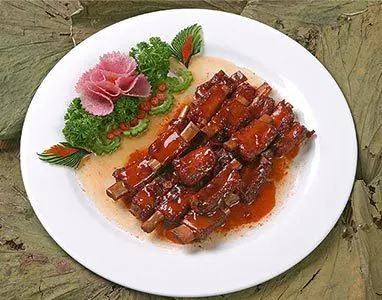
- Main Ingredients & Cooking Method: This dish, known for its caramel color and rich meaty aroma, begins by boiling fresh ribs to remove blood clots, floating oil, and bone fragments. After that, the ribs are placed in a special bamboo basket, seasoned with spices like star anise and cinnamon, then stewed with soy sauce, cooking wine, and salt. After 1.5 hours on low heat, it is simmered over gentle heat for 10-20 minutes until the sauce thickens.
- Taste & Texture: Salty with a hint of sweetness, the ribs are tender and juicy with a deep bone aroma after the prolonged simmering. The sauce is deeply infused into the meat, giving the ribs a complex and rich flavor.
- Cultural Significance: While not tied to a specific cultural event, Soy Sauce Pork Ribs hold an important place in Chinese cuisine. Often served at family gatherings, festive occasions, and as a mark of hospitality, the dish represents warm wishes and hearty hospitality.
- Popularity & Influence: A classic dish in Chinese cuisine, it enjoys high recognition. Popular in restaurants across China, its fame extends to overseas Chinese communities and restaurants.
- Liangxi Crispy Eel
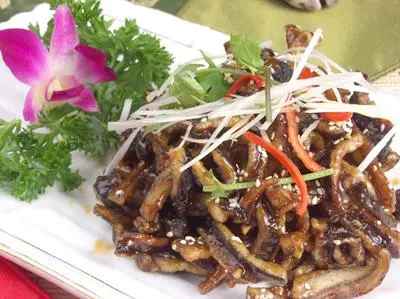
- Main Ingredients & Cooking Method: A traditional Wuxi dish, Liangxi Crispy Eel uses eel fillets fried twice. The eel turns a shiny, deep brown during the initial frying and is then fried again for a crispy, palatable texture. The final touch is a special sauce that brings a sweet and sour taste.
- Taste & Texture: With a sweet and sour flavor, the twice-fried eel offers a crispy outside and tender inside. The added sauce enhances its flavors, making it a delight to eat.
- Cultural Significance: Representing the culinary skills of Jiangsu and Wuxi’s local flavors, this dish is beloved by both residents and tourists. Symbolizing abundance and prosperity, its long-standing history adds to its cultural value in the region.
- Popularity & Influence: A hallmark dish of Wuxi, it’s not only widespread in local eateries but has also found its way into Chinese restaurants in other regions.
- Wuxi Pork Ribs
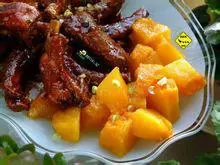
- Main Ingredients & Cooking Method: A traditional Wuxi specialty, this dish uses pork ribs, boiled to remove impurities, then stewed with special seasonings and broth. The result is a soft, sweet, perfectly balanced taste between salty and sweet, juicy meat that’s oil-rich but not greasy.
- Taste & Texture: Tender and sweet, the stewed ribs are soft, melting in the mouth. The sauce brings richness to the taste, making it savory and juicy.
- Cultural Significance: A traditional dish of Wuxi, it embodies the local love for gourmet food and the transmission of culinary culture. Serving as a culinary attraction, it plays a significant role in Wuxi’s gastronomic tourism.
- Popularity & Influence: With its unique flavors, this dish has found its way to many Chinese restaurants both domestically and internationally.
- Meat-Stuffed Gluten
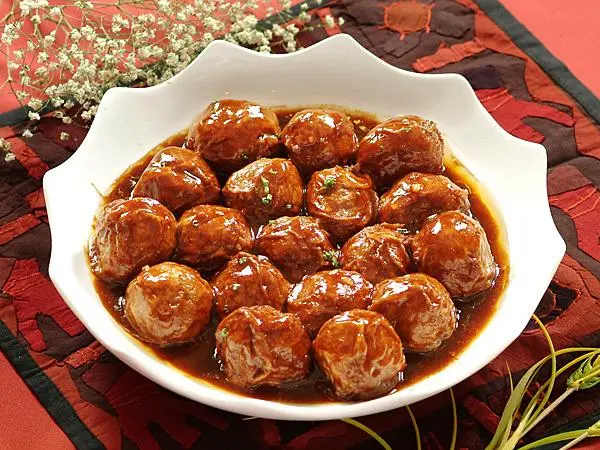
- Main Ingredients & Cooking Method: A renowned dish in Wuxi, this dish involves stuffing meat into Wuxi’s unique gluten, creating a simple yet delicious treat. Additional ingredients like bamboo shoots and mushrooms enhance its flavor.
- Taste & Texture: With a full-bodied texture, biting into it releases a burst of meat juices, offering a prolonged savory experience. The combination of meat and gluten results in a delightful texture contrast.
- Cultural Significance: A beloved traditional dish in Wuxi, it’s a staple during festivals and is a common dish to serve to guests. It stands as a testament to Wuxi’s culinary traditions and flavors.
- Popularity & Influence: A signature dish of Wuxi, it’s well-recognized and contributes significantly to the city’s culinary and tourism industries.
- Mirror-Box Tofu
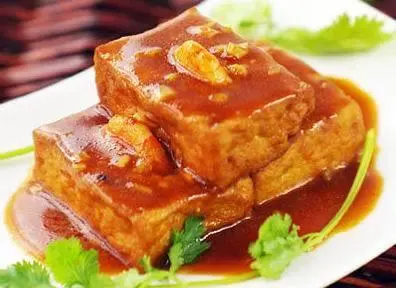
- Main Ingredients & Cooking Method: A Wuxi specialty from the Suzhou culinary tradition, this dish uses “small box” tofu, a local delicacy. The tofu is cut into blocks, then filled with a meat mixture that includes shrimp.
- Taste & Texture: With a bright orange hue, its taste is rich and delicate. The silky tofu and meat mixture complement each other perfectly, making it a versatile dish that appeals to both vegetarians and meat-lovers.
- Cultural Significance: A traditional Wuxi dish, its name is derived from the tofu block’s resemblance to a woman’s makeup mirror box. The dish has become an integral part of local dining tables.
- Popularity & Influence: As a traditional dish of Wuxi, it enjoys high recognition. It plays a pivotal role in promoting Wuxi’s gastronomic tourism both locally and in other regions.
- Fermented Tofu Juice Meat
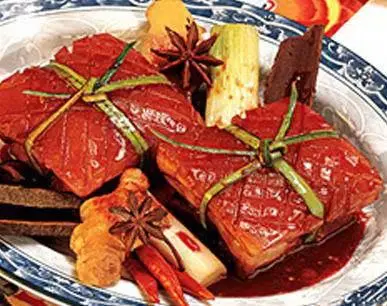
- Main Ingredients & Cooking Method: Originating in 1906, this Wuxi dish was crafted by chef Wang Rong. Traditionally seasoned with fermented tofu, it now often uses red yeast rice. The meat is shaped to resemble fermented tofu blocks. Over time, culinary experts began combining it with braised duck, infusing the flavors into each other.
- Taste & Texture: The meat, with its crispy exterior and tender interior, offers a rich and harmonious blend of sweetness with a touch of saltiness.
- Cultural Significance: As a traditional Wuxi dish, it showcases the region’s rich culinary history and traditions.
- Popularity & Influence: This dish has carved its niche in Wuxi’s gastronomy, attracting both locals and tourists alike. Its unique preparation and taste have given it a respected place in the city’s culinary landscape.
- Crispy Silverfish
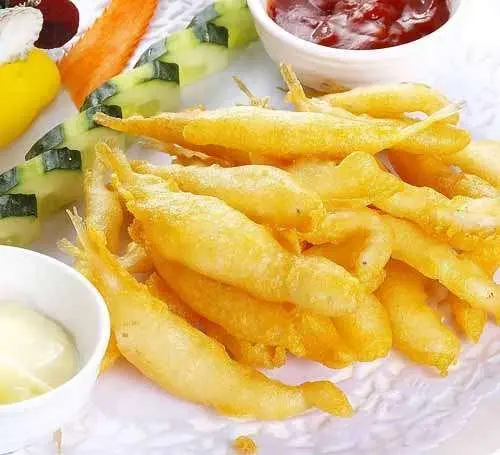
- Main Ingredients & Cooking Method: This Wuxi specialty is made using the high-quality silverfish from Tai Lake. Recognized for its tender, flexible, and smooth texture, the fish undergoes seasoning, battering, and frying to achieve a full-bodied appearance and a milky-yellow hue.
- Taste & Texture: The crispy exterior and tender interior, combined with the exquisite flavors, offer a delightful eating experience.
- Cultural Significance: Representing Wuxi’s culinary traditions and unique flavors, the dish showcases the abundant aquatic resources of the region.
- Popularity & Influence: Its unique taste and appearance have made it a central part of Wuxi’s culinary and tourism industries.
- Meat-Stuffed Raw Gluten
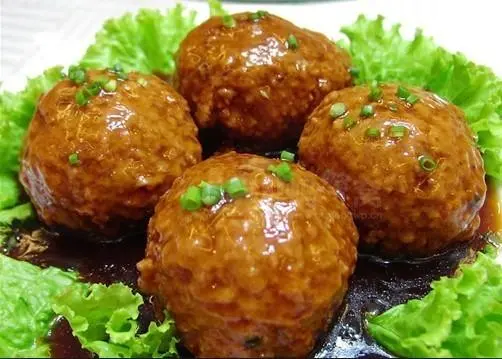
- Main Ingredients & Cooking Method: A traditional Wuxi dish belonging to the Xi culinary tradition, it’s made using raw gluten (water gluten) and meat filling. The combination creates a thin, resilient, shiny gluten exterior with a juicy meat interior.
- Taste & Texture: The thin and smooth gluten, combined with the juicy meat, offers a rich and harmonious mouthfeel.
- Cultural Significance: As a Wuxi traditional dish, it signifies the region’s unique culinary traditions and flavors.
- Popularity & Influence: Representing one of the culinary traditions of Wuxi, it’s popular among locals and visitors alike, adding to Wuxi’s culinary reputation.